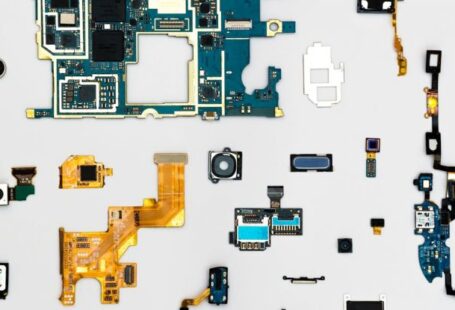In the world of robotics, collaborative robots, or cobots, have become increasingly popular due to their ability to work alongside humans in various industrial settings. While cobots have typically been used in structured environments with well-defined tasks, there is a growing interest in deploying them in unstructured environments where they need to adapt to changing conditions and interact with human workers. To operate effectively in these dynamic settings, cobots require advanced cognitive abilities that enable them to perceive, reason, and make decisions in real-time. In this article, we will explore the cognitive abilities that are essential for cobots to work successfully in unstructured environments.
**Perception and Sensing**
One of the key cognitive abilities that cobots need to possess is advanced perception and sensing capabilities. In unstructured environments, cobots must be able to accurately perceive and interpret their surroundings to navigate safely and interact with objects and humans. This requires the integration of various sensors, such as cameras, lidar, and force sensors, to gather real-time data about the environment. By processing this information, cobots can create a detailed map of their surroundings and identify obstacles, objects, and humans to plan their actions accordingly.
**Adaptability and Flexibility**
Another crucial cognitive ability for cobots operating in unstructured environments is adaptability and flexibility. Unlike traditional industrial robots that perform repetitive tasks in controlled environments, cobots must be able to adapt to changing conditions and unexpected events. This requires the ability to learn from experience, adjust their behaviors in real-time, and collaborate with human workers to accomplish complex tasks. By incorporating machine learning algorithms and artificial intelligence, cobots can continuously improve their performance and adapt to new challenges in unstructured environments.
**Decision-Making and Planning**
Effective decision-making and planning are essential cognitive abilities for cobots working in unstructured environments. Cobots must be able to analyze complex situations, evaluate multiple options, and make decisions based on predefined rules and objectives. This involves planning their actions, predicting the outcomes of different scenarios, and selecting the most optimal course of action to achieve their goals. By integrating advanced algorithms for path planning, task allocation, and decision-making, cobots can perform tasks efficiently and safely in dynamic environments.
**Human-Robot Interaction**
In unstructured environments, cobots often need to interact closely with human workers to collaborate on tasks and share workspace. This requires sophisticated cognitive abilities to understand human intentions, interpret gestures and expressions, and communicate effectively in real-time. By incorporating natural language processing, computer vision, and haptic feedback systems, cobots can interact with humans intuitively and adapt their behaviors to ensure a smooth and productive collaboration. This human-robot interaction is crucial for enhancing productivity, safety, and efficiency in unstructured environments.
**Continuous Learning and Improvement**
To operate successfully in unstructured environments, cobots must possess the cognitive ability to learn continuously and improve their performance over time. By analyzing data, identifying patterns, and adjusting their behaviors based on feedback, cobots can enhance their capabilities and adapt to evolving requirements. This involves integrating reinforcement learning algorithms, predictive analytics, and self-optimization techniques to enable cobots to learn from their experiences, optimize their performance, and achieve higher levels of autonomy in unstructured environments.
**Innovations in Cognitive Robotics**
As the field of cognitive robotics continues to advance, researchers and engineers are exploring new techniques and technologies to enhance the cognitive abilities of cobots in unstructured environments. From advanced sensor fusion techniques to deep learning algorithms and cloud-based cognitive computing, there is a wide range of innovations that are shaping the future of cobots. By integrating these cutting-edge technologies, cobots can perform complex tasks, adapt to changing conditions, and collaborate effectively with humans in diverse industrial settings.
**The Future of Cobots in Unstructured Environments**
In conclusion, the successful deployment of cobots in unstructured environments relies on their advanced cognitive abilities to perceive, reason, make decisions, and interact with humans effectively. By integrating state-of-the-art technologies and algorithms, cobots can enhance their perception, adaptability, decision-making, and learning capabilities to operate autonomously in dynamic settings. As cognitive robotics continues to evolve, we can expect to see more innovative solutions that enable cobots to work seamlessly alongside human workers in unstructured environments, revolutionizing the way we approach automation and collaboration in the industrial sector.





